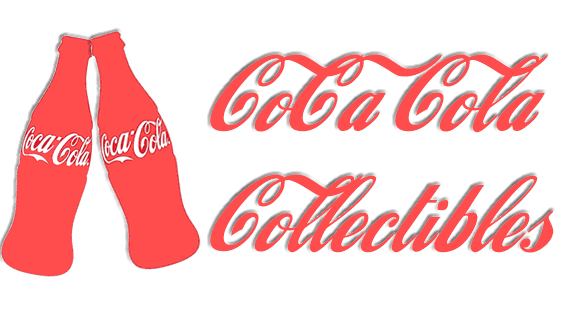One of the great attractions of antique advertising — and Coca-Cola collectibles in particular — is the colors and wonderful graphics used to promote the product. In fact, I find that the most important factor in a collector's decision to buy or not to buy is its “displayability.” Displayability directly affects the value of a piece. If the condition is great, the piece will display well. If it displays well, it will be highly desirable. If it is highly desirable, it will be valued high. So it is easy to see how important this “displayability” is to one's collection, not only to have a quality collection, but a quality investment as well.
I have always felt that collecting is an investment and it is important to protect that investment by keeping pieces in your collection in the same condition as the day you purchased them. Displaying and storing your collection properly is an important factor in maintaining condition. When you purchase a piece for your collection, you must determine if it will be displayed or stored.
For displaying paper or cardboard signs, calendars, or posters, proper framing is essential. Make sure the person doing the framing uses the proper paper conservation methods and is aware of the value and importance of the piece. It is critical that the framer does not do anything to the piece that you have not discussed, such as gluing, trimming, or removing anything from it, such as a metal strip or calendar page. Also make sure the framer is insured to cover your piece while it is in his possession and add that on your receipt with the value. Point out the importance of using acid-free mats and backing, as well as using a spacer such as a mat so the printed piece does not touch the glass. If the edges of the piece are sharp with no tears or edge wear, don't cover the edge with a mat, so if you should ever decide to sell it, the potential buyer can see that nothing has been hidden.
Be sure framed pieces aren't exposed to constant sunlight, and beware of humidity. Bathrooms and basements are especially prone to causing moisture damage. Lighting is also important when displaying framed pieces. Hooded frame lights work well for small quality pieces, which add a rich feeling to them, but track lighting is best for areas with many framed pieces. The ability to move individual lights to eliminate glare is a big advantage, but remember, eliminating all glare from a room with many framed pieces is just not possible. Some people use non-glare glass; however, it mutes the wonderful colors.
Paper signs, calendars, and cardboard pieces that aren't going to be displayed require proper care for storage and handling. I have found that the best way to protect these pieces is to purchase foamcore and a roll of thin, clear acetate at an art supply store. Measure the piece and allow an extra quarter of an inch all around. Cut the foamcore to this size. Do not attach the piece to the foamcore with any tape or glue. Simply place the piece face up on the foamcore, then flip the foamcore and piece over (face down) on a rolled-out section of acetate. Cut the acetate sheet with plenty of excess and pull tightly across the back of the foamcore and tape the acetate. Cut the ends and again pull tightly and tape. The stiff foamcore back and acetate keep the piece clean and flat to prevent creasing and rolling, and allow stacking, handling, and transportation. Foamcore and acetate aren't cheap, but the cost is well worth the protection.
Serving trays and tin signs require a lot more attention and should be checked periodically when being displayed. Some people frame certain trays and tin signs, and that is fine, but make sure that a sealed, framed piece can breathe, meaning it is not airtight. If you are not framing a tray or sign, be careful where the piece is being displayed. High humidity is always a problem with tin. Light pitting can be prevented by applying a mild car wax every year or two. The best place to display tin is in an area that maintains fairly constant temperature. Continual temperature changes is not good for tin lithographed pieces.
Small collectibles, such as pocket mirrors, watch fobs, knives, and celluloid pieces can be protected and displayed well in showcases. If you don't have room for a large showcase, many small flat ones are available.
Flat paper items like blotters, coupons, magazine ads, letterheads, and other paper collectibles are best kept in plastic sleeves and filed in a three-ring binder for easy access. Books, paper items, and other collectibles can be stored in inexpensive corrugated file boxes that are readily available from the large chain stationery supply stores. Pack the items, label the boxes, and store them off the ground in a dry area.
When displaying your collection, be creative and don't take it too seriously. Move things around until you find the perfect spot for your favorite piece. Personally, I find it difficult to have high quality pieces that aren't displayed. I collect them because I enjoy them, and I can't enjoy them if I can't see them.
